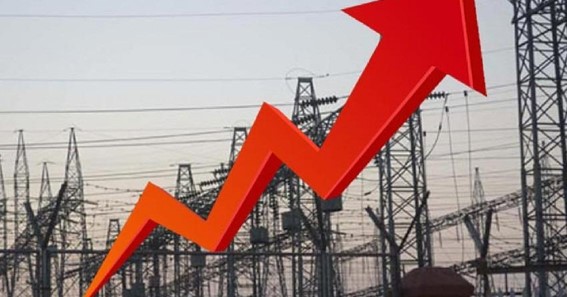Are you curious to know what is tariff in electrical? You have come to the right place as I am going to tell you everything about tariff in electrical in a very simple explanation. Without further discussion let’s begin to know what is tariff in electrical?
What Is Tariff In Electrical?
The electrical industry plays a critical role in providing power supply for various sectors, including residential, commercial, and industrial. To ensure fair and sustainable pricing for electricity consumption, tariffs are implemented. In this blog post, we will delve into the concept of tariffs in the electrical sector, their components, and the factors that influence tariff structures.
Understanding Tariffs In The Electrical Sector:
Tariffs in the electrical sector refer to the pricing structures that determine the cost of electricity consumption for end-users. These tariffs are typically set by regulatory bodies or utility companies and are based on several factors, including the cost of generation, transmission, distribution, and other operational expenses associated with supplying electricity.
Components Of Electrical Tariffs:
Electrical tariffs consist of various components that contribute to the overall cost of electricity for consumers. These components include:
- Fixed Charges: Fixed charges are a predetermined amount that consumers pay on a monthly or quarterly basis, irrespective of their actual electricity consumption. These charges cover the fixed costs associated with infrastructure, maintenance, and administrative expenses.
- Energy Charges: Energy charges are based on the actual amount of electricity consumed by the consumer. These charges are calculated based on the unit price per kilowatt-hour (kWh) of electricity consumed.
- Demand Charges: Demand charges are applicable to commercial and industrial consumers and are based on the peak demand for electricity during a specific period. These charges cover the cost of ensuring sufficient capacity to meet the consumer’s peak power requirements.
- Time-of-Use Charges: Some tariff structures incorporate time-of-use charges, where electricity prices vary depending on the time of day or season. Higher rates may be applicable during peak hours or high-demand periods, while lower rates are offered during off-peak hours.
Factors Influencing Tariff Structures:
Several factors influence the design and structure of electrical tariffs:
- Cost of Generation: The cost of generating electricity, including fuel costs, infrastructure investment, and maintenance expenses, significantly impacts the tariff structure. Different sources of generation, such as fossil fuels, renewable energy, or nuclear power, have varying costs that influence tariffs.
- Transmission and Distribution Costs: The expenses associated with transmitting and distributing electricity from power plants to end-users are included in the tariff structure. These costs cover investments in transmission lines, substations, distribution networks, and maintenance.
- Regulatory Policies: Regulatory policies and guidelines set by government authorities or regulatory bodies play a crucial role in determining tariff structures. These policies aim to balance the interests of consumers, utility companies, and the overall sustainability of the electrical sector.
- Demand-Supply Dynamics: The demand for electricity and its variability throughout the day or year influence tariff structures. Peak demand periods often result in higher tariffs due to the need for additional infrastructure and capacity to meet the increased power requirements.
Conclusion:
Tariffs in the electrical sector are essential for ensuring fair and sustainable pricing for electricity consumption. They encompass various components such as fixed charges, energy charges, demand charges, and time-of-use charges. The design and structure of tariffs are influenced by factors such as the cost of generation, transmission and distribution costs, regulatory policies, and demand-supply dynamics. Understanding these tariff structures is crucial for consumers to make informed decisions regarding their electricity usage and to promote energy conservation. Additionally, transparent and well-designed tariff structures contribute to the financial viability of utility companies, infrastructure development, and the overall stability of the electrical sector.
FAQ
What Is Meant By Tariff Electricity?
(b) “tariff” means a schedule of standard prices or charges for specified services that are applicable to all such specified services provided to the type or types of customers specified in the tariff notification.
What Are The Types Of Electricity Tariffs?
Electricity Rates or Tariff | electricaleasy.com
- Simple tariff. In this type of tariff, a fixed rate is applied for each unit of the energy consumed.
- Flat rate tariff.
- Block rate tariff.
- Two-part tariff.
- Maximum demand tariff.
- Power factor tariff.
- Three-part tariff.
How Is The Electricity Tariff Calculated?
Flat demand rate tariff – The flat demand rate tariff is expressed by the equation C = Ax. In this type of tariff, the bill of the power consumption depends only on the maximum demand of the load. The generation of the bill is independent of the normal energy consumption.
What Is The Electricity Tariff In India?
According to the proposal, the per unit electricity charge for domestic rural consumers will be increased from Rs 3.50 to Rs 4.35 (first 100 units). Meanwhile, if the power consumption goes beyond 300 units, a hike from Rs 5.50 per unit to 7 per unit has been proposed.
I Have Covered All The Following Queries And Topics In The Above Article
What Is Tariff In Electrical Engineering
Types Of Tariff In Electricity
What Is Tariff In Electrical Mcq
What Is Tariff In Power System
Two-Part Tariff Electricity
Power Factor Tariff
Power Factor Tariff Advantages And Disadvantages
Objective Of Tariff
Electricity Tariffs Are Fixed Under Which Act
What Is Tariff In Electrical
What is the meaning of electricity tariff
What is electricity tariff?

